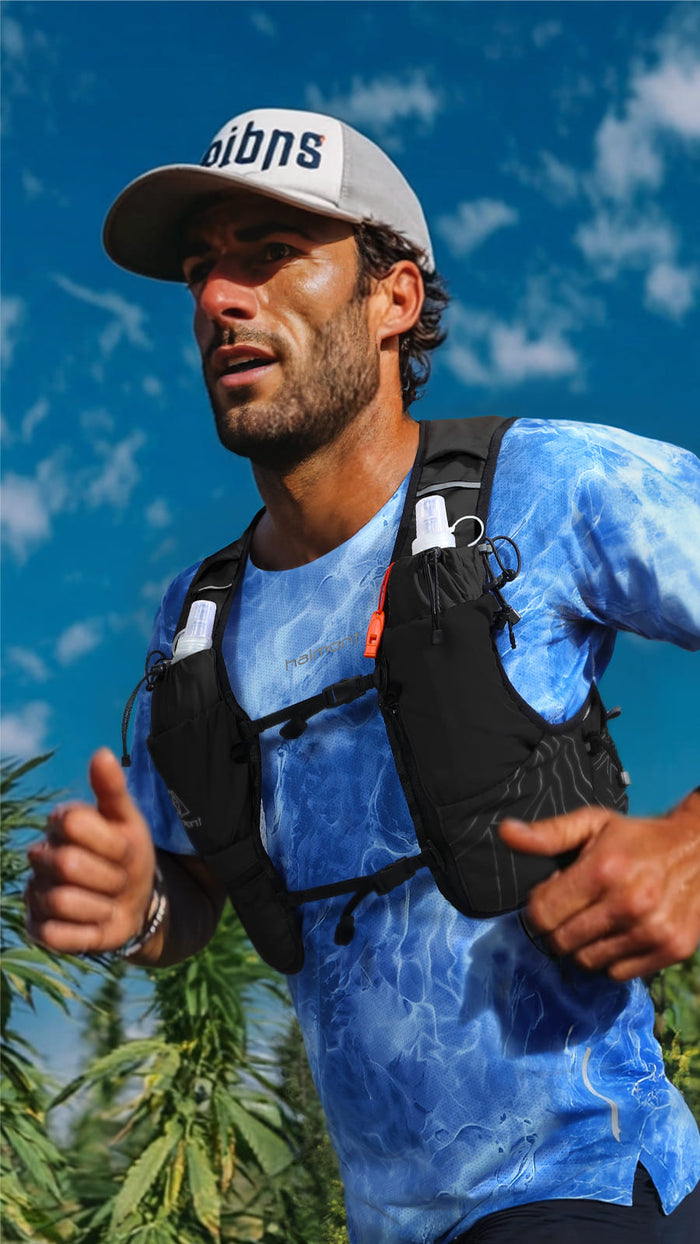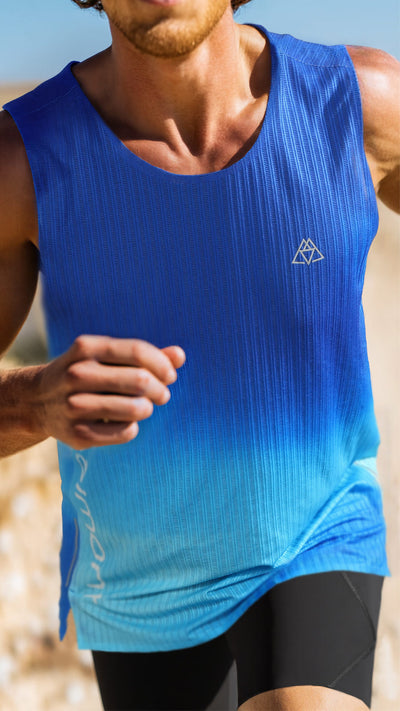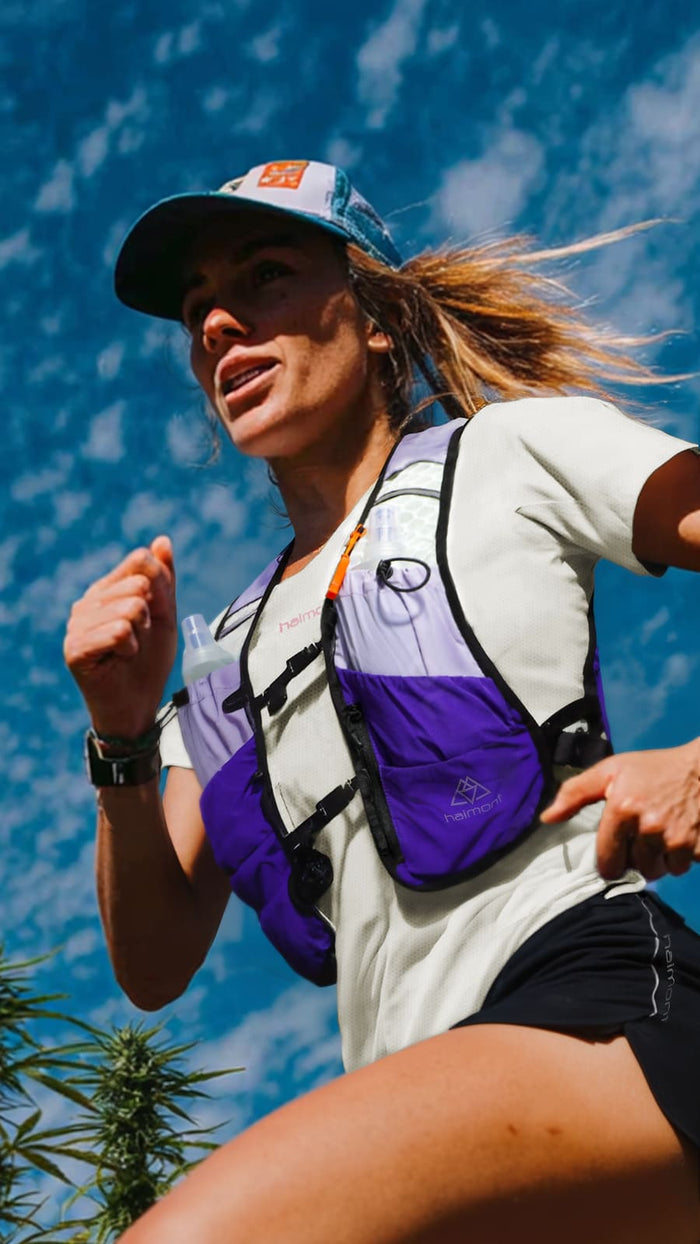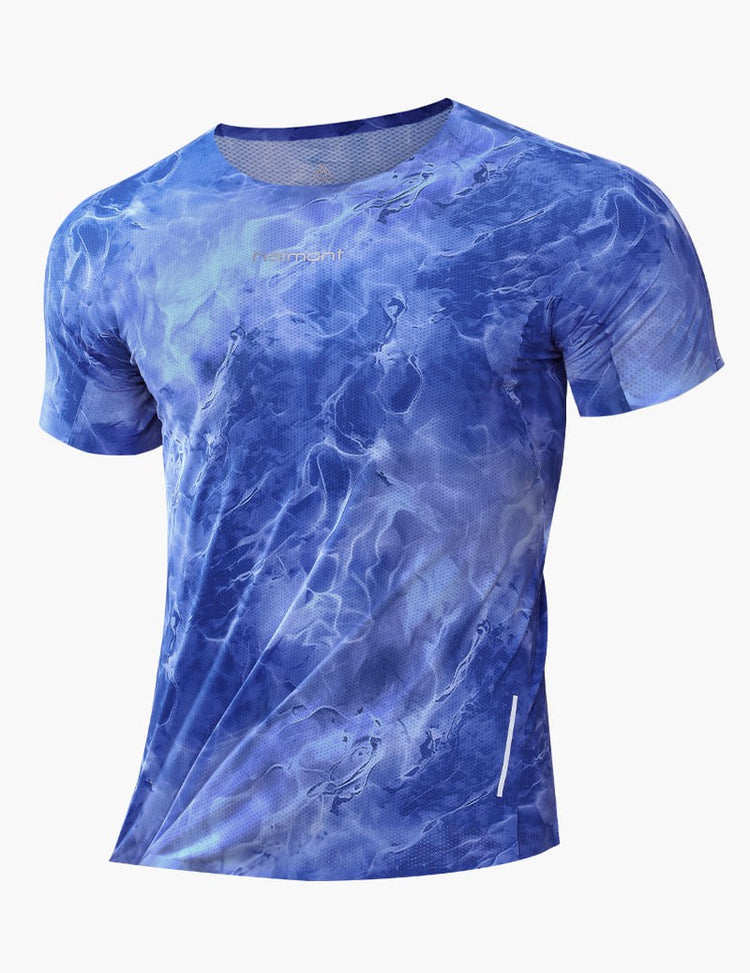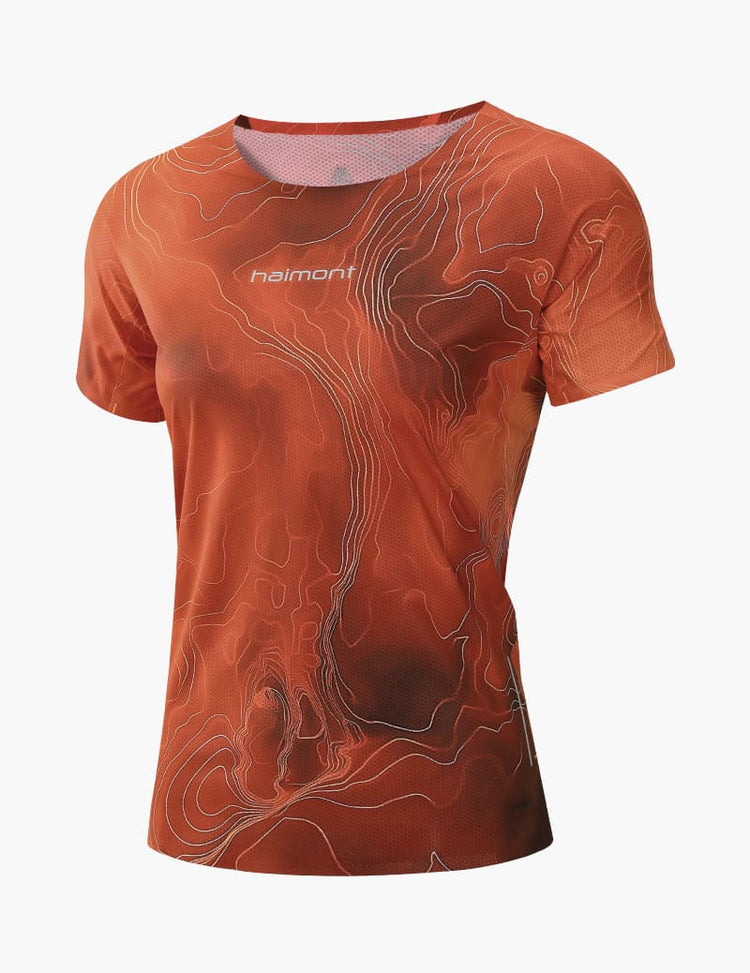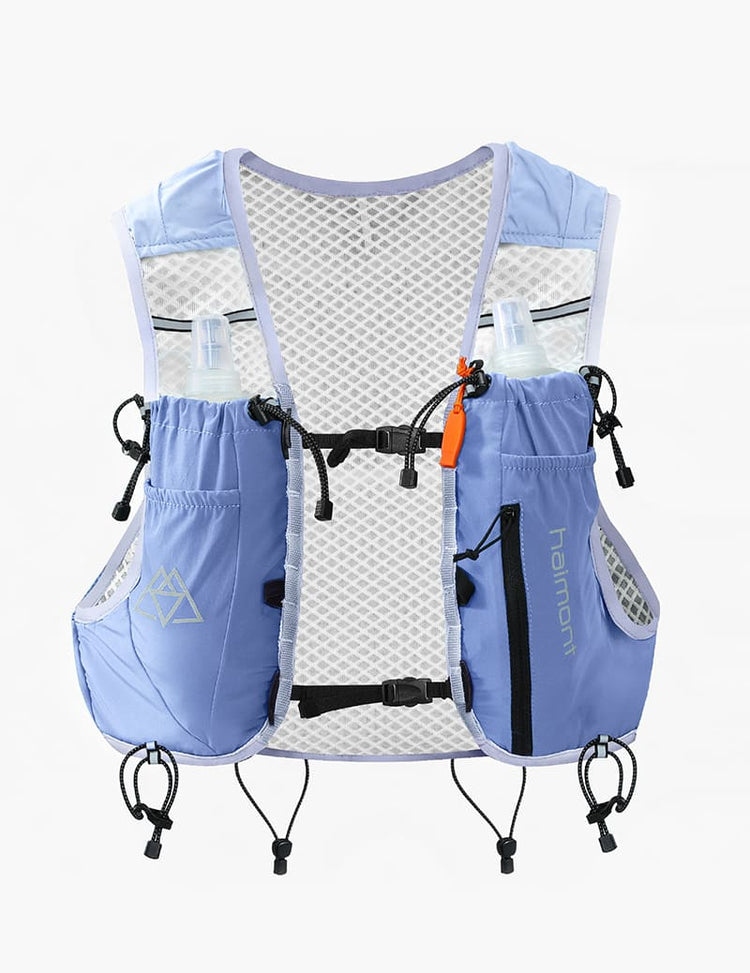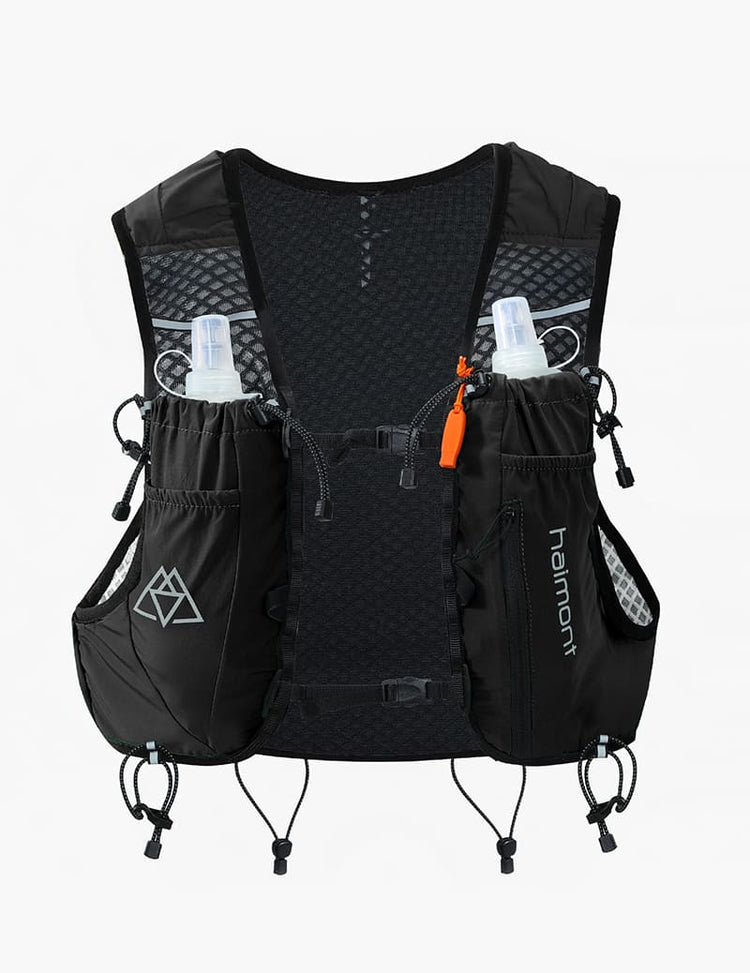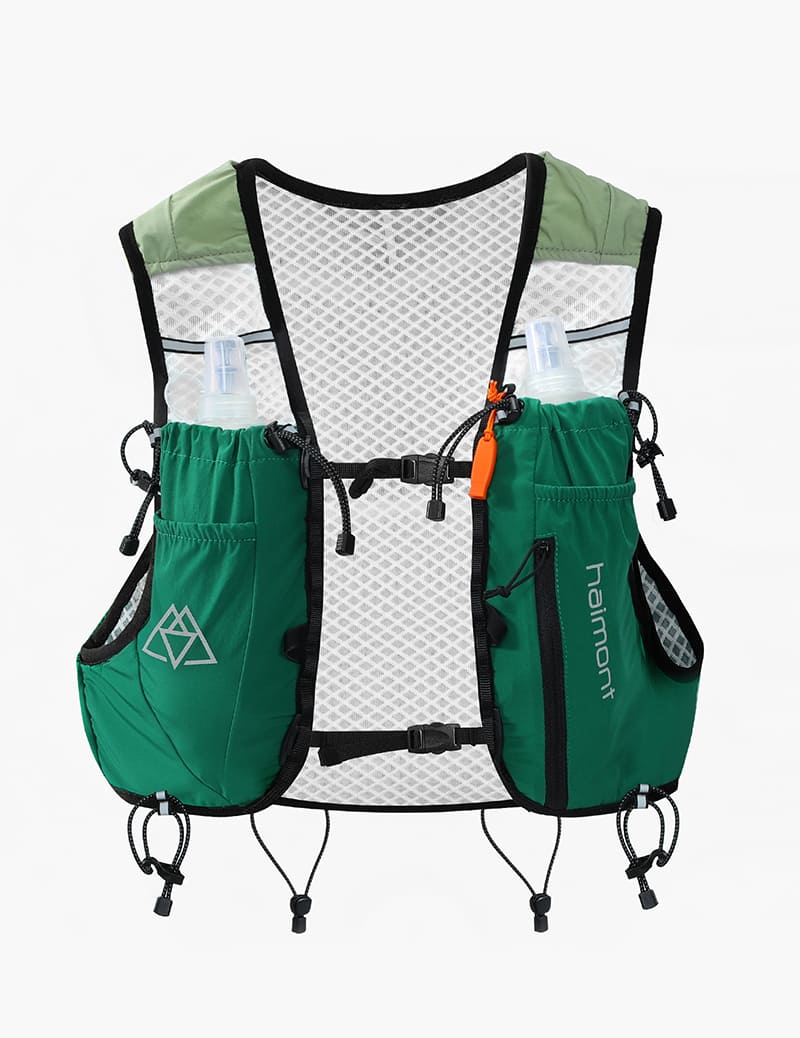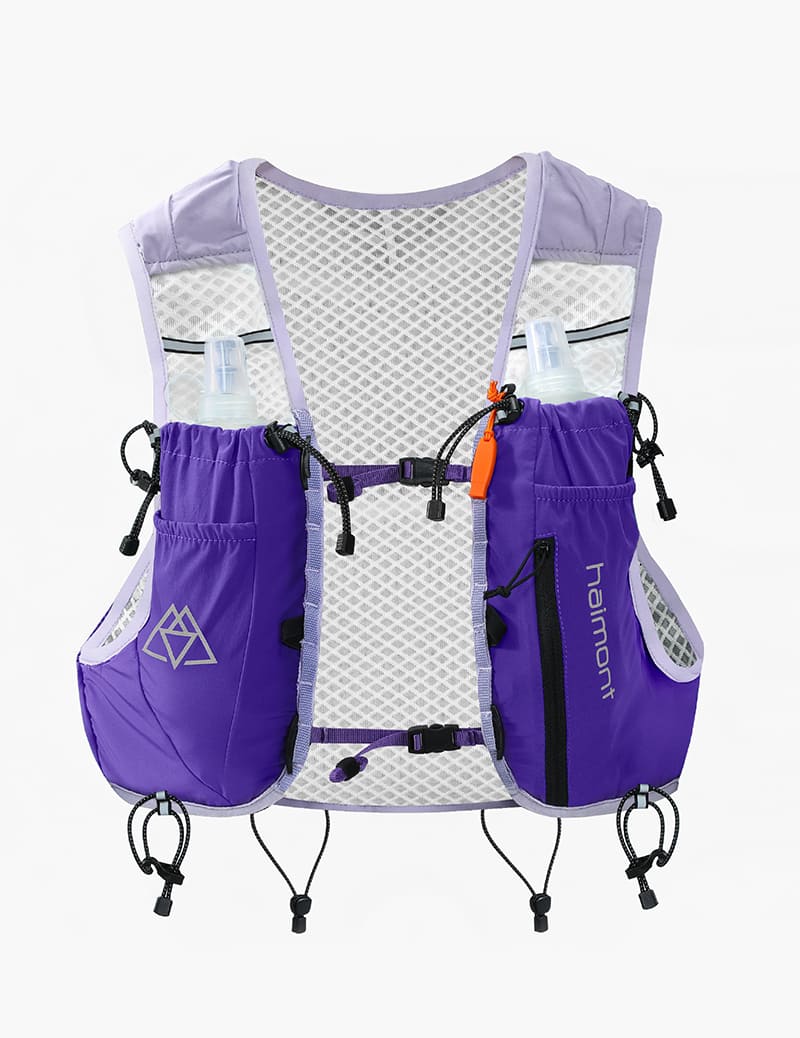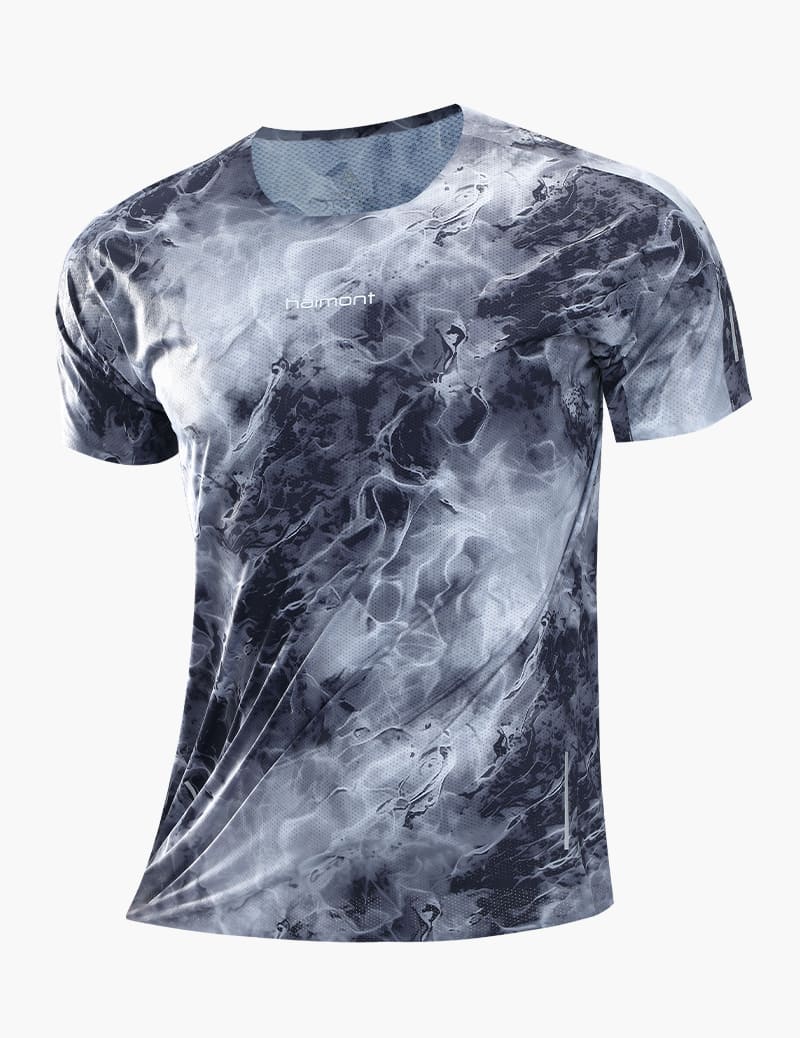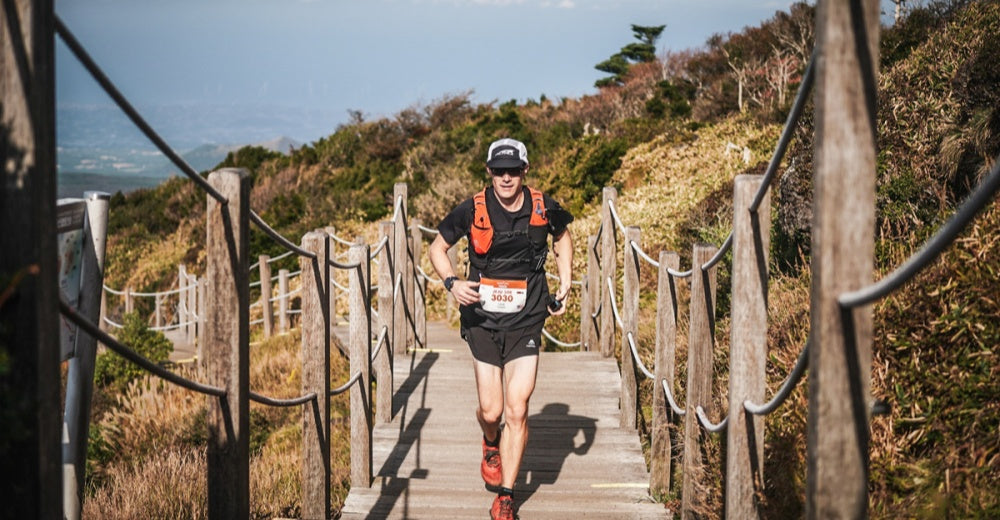Table of contents
Every trail runner carries a dream course in their heart — a trail that winds toward the peaks, crosses coastal ridges, and whispers: “I can do this.”
In the southern hemisphere, Australia stands as a paradise for trail runners, offering some of the most diverse terrains on Earth: the steep canyons of the Blue Mountains, the lush forests of Tasmania, the rugged coastal cliffs of Western Australia, and the tropical highlands of Queensland. Each trail tests not just endurance but spirit — a dance between human grit and raw nature.
For newcomers, these courses are the beginning of self-discovery. For seasoned ultrarunners, they’re the ultimate test of limits. Wherever you stand, lightweight gear, smart fueling, and a steady rhythm are what carry you from start to finish.
At Haimont, we believe in running light, durable, and leave-no-trace. Having accompanied countless runners through valleys and night skies, we’ve handpicked five of Australia’s most coveted trail races for 2026 — complete with course insights, registration details, and practical fueling advice — to help you run lighter, farther, and freer.
Ultra-Trail Australia by UTMB (Blue Mountains, NSW)
Location: Blue Mountains National Park, with Katoomba as the race hub
Dates: May 14–17, 2026
Distances: 100 M / 100 km / 50 km / 22 km / 11 km
Terrain Highlights: Steep ridgelines, deep forests, canyon stairs, and stone steps — ideal for runners who love technical elevation.
Why It’s Special: Part of the UTMB World Series, UTA is the ultimate testing ground for endurance, technique, and fueling strategy.
Registration Opens: September 18, 2025 at 11:00 AEST
Ultra-Trail Australia Fueling Guide
| Runner Type | Distance Recommendation | Hydration Frequency | Energy Intake | Electrolytes & Salt | Extra Energy Tips |
|---|---|---|---|---|---|
| Beginner | 22 km / 50 km | Every 45–60 min (with electrolytes) | 1 gel every 60–75 min | Adjust based on temperature | Add 200–300 kcal of extra energy (bars or nuts) for climbs |
| Experienced | 100 km / 100 M | Every 30–40 min + 20–25 g fast carbs | Mix gels + bar pieces | 1 salt tab every 60–90 min (more in heat or climbs) | Maintain steady calorie and core temperature overnight |
On-Course Fueling Strategy
Aid stations are spaced roughly every 10–15 km. Study the course map and plan your intake rhythm to avoid long stops. Practice “fuel-on-the-move” — sip and eat while hiking into aid zones rather than pausing.
Weather & Terrain
Expect cool mornings, damp valleys, and mild days — layers are key. While water sources are common, start with at least 500–750 ml. Mountain weather can shift fast; carry a light wind-resistant shell.
Gear & Carry Strategy
| Gear Type | Recommendations & Notes |
|---|---|
| Trail Vest / Pack | • 5 L: Best for 20–50 km — compact and stable for short to mid races. • 8–10 L: Ideal for 50 km+ or long mountain courses — allows room for layers and extra nutrition. Choose a vest with snug shoulder straps and chest locks to prevent bounce on descents. |
| Fuel Organization | • Front pockets: gels, salt tabs, soft flasks — quick access. • Main compartment: hydration bladder, light jacket, spare gloves, and headlamp. Efficient packing keeps transitions smooth and rhythm steady. |
| Apparel | Go for Haimont Mountain Wind Trail T-Shirt or DryFlex Long Sleeve Top — designed for humid, variable conditions in the Blue Mountains. Quick-dry, breathable fabric helps regulate body temperature over long hours. |
| Night Running Gear | For night starts (like the 100 M), bring a primary + backup headlamp. Keep one in the front pocket for quick swaps at aid stations. |
| Extras | Depending on forecast and distance: wind shell, 4–6 energy gels, salt tabs, compact first-aid kit, and emergency blanket. |
Noosa Ultra-Trail: Where Ocean Breeze Meets the Rainforest Trails
Location: Noosa, Queensland – Noosa Trail Network
A stunning blend of coastal views, sandy stretches, and tropical forest trails, the Noosa Ultra-Trail captures the laid-back yet challenging spirit of Queensland’s Sunshine Coast.
The race starts along the scenic coastal track and beach, before heading inland into lush rainforest paths and rocky terrain. The final sections feature rolling forest roads — a mix that feels as beautiful as it is demanding.
Total elevation gain: approx. 1,200 m
Don’t be fooled by the moderate numbers — soft terrain, humidity, and strong ocean winds make this course far tougher than it looks.
Event Details
Date: March 21, 2026
Distances: 15 km / 25 km / 30 km / 50 km / 80 km / 100 km
Registration Opens: September 1, 2025
Terrain & Climate Highlights
The course begins on coastal boardwalks and beaches before gradually transitioning into tropical rainforest tracks and rocky paths. The second half features rolling dirt roads surrounded by dense bushland.
Expect soft ground, high humidity, and steady coastal winds — conditions that challenge hydration and endurance alike.
Sun exposure and sea breeze are the biggest factors impacting perceived effort, especially during the middle of the day.
Fueling & Hydration Strategy
| Distance | Hydration | Energy Intake | Electrolytes / Salt Tabs | Special Tips |
|---|---|---|---|---|
| 22 km (Intro / Beginner) | Sip every 45–60 min, include electrolytes | 1 gel every 60–75 min | 1 tab every 90 min | Take fuel before climbs to avoid low blood sugar. Carry ~200–300 kcal backup energy. |
| 50 km (Intermediate) | Drink every 30–45 min | 1 gel every 45–60 min + ½ energy bar | 1 tab every 60 min | Refill water at every aid station; increase salt tabs in hot conditions. |
| 100 km (Experienced) | Sip every 20–30 min | 20–25 g carbs every 30–40 min (gels, chews, rice cakes) | 1 tab every 45–60 min | Eat before long climbs and at altitude; increase electrolytes at night. |
| 100 mi (Elite – unofficial extension) | Sip every 15–20 min | 80–100 g carbs per hour (mixed sources) | 1–2 tabs every 30–45 min | Use dual carb sources (glucose + fructose 2:1) to prevent stomach issues. |
Aid Station Strategy
While aid stations are typically well-stocked, spacing can reach 8–12 km between stops.
Plan ahead by marking aid station mileage on your route map and setting a consistent routine: refill + refuel + move on.
Avoid wasting time hesitating or reorganising gear at the stations.
Weather & Gear Tips
March in Queensland brings warm, humid early-spring conditions.
Prioritise lightweight, breathable, and quick-drying gear, and change socks at least once during longer distances to prevent blisters.
Gear Recommendations
Backpack
- Minimum 5L for shorter distances.
-
8L or more recommended for 80 km / 100 km to carry:
- Headlamp + spare batteries
- Lightweight first-aid kit
- Nutrition and hydration supplies
Clothing
Choose quick-dry, anti-chafe shorts and socks to handle the mix of sand, forest brush, and humidity.
A breathable T-shirt or singlet that dries fast is key in coastal sections.
Night Running (for 100 km categories)
- Headlamp + backup light + reflective vest are essential for visibility and safety during night segments.
- Test your lighting setup in advance to ensure comfort and battery reliability.
Final Note
The Noosa Ultra-Trail is not just a race — it’s an experience where ocean air meets rainforest energy.
Whether you’re tackling 22 km or 100 km, the secret to success lies in steady hydration, early fueling, and smart gear choices.
Run Larapinta Stage Race (Alice Springs & MacDonnell Ranges, Northern Territory)
Location:
Held in the heart of Australia’s red desert, the Run Larapinta Stage Race takes place around Alice Springs and traverses the rugged MacDonnell Ranges.
Date:
August 14–17, 2026
Distance Options:
- The Malbunka: 128 km (4 days)
- The Namatjira: 80 km (4 days)
Terrain:
The course features classic Outback conditions—red earth, rocky trails, sand, and dry riverbeds. Expect extreme dryness, limited aid, strong UV exposure, and weak signal coverage. This is one of Australia’s ultimate tests of self-sufficiency and endurance.
Registration Opens:
October 27, 2025, at 12:00 pm AEDT
Fueling & Hydration Strategy
Aid stations are sparse (every 10–15 km, with some sections up to 20 km apart), requiring a high self-sufficiency approach.
| Stage Type | Hydration Rhythm | Energy Intake | Electrolytes / Salt Tabs | Solid Food | Key Tips |
|---|---|---|---|---|---|
| Short Course (The Namatjira) | Drink every 40–50 min (focus on electrolytes) | 20–25 g fast carbs every 60 min (energy gel) | 1 salt tab every 90 min | Small salty crackers or dried fruit | Mostly daytime stages—focus on sun protection and hydration planning. |
| Long Course (The Malbunka) | Sip every 25–35 min | 20–25 g carbs every 40–50 min (gels or chews) | 1–2 salt tabs every 60 min | Small solid snack every 90–120 min (bar pieces, rice cakes, nuts) | Increase salt intake in hot or night stages; never go long without fuel. Some segments have up to 20 km between aid—carry spare water and dense snacks. |
| Post-Stage Recovery (Camp) | Within 30 min: 500–700 ml water + electrolytes | High-carb with moderate protein (recovery drink or banana + oats) | — | — | Take electrolytes before sleep to prevent cramps. |
Fueling Tips:
- The air is extremely dry—drink even when not thirsty.
- Multi-day effort requires higher hourly intake (250–300 kcal/hour).
- Alternate sweet and salty fuels to prevent flavor fatigue.
- If dizziness, hot skin, or dark urine occurs: cool down immediately and increase salt intake.
Gear & Packing Recommendations
| Category | Recommended Gear | Usage Notes |
|---|---|---|
| Trail Vest | 8L vest (recommended) / 5L lightweight version | For long stages, an 8L vest is ideal: 1.5L bladder + extra layers + headlamp batteries in the main compartment; gels, salt tabs, and snack pieces in front pockets. 5L version suits short course or minimalist runners. Can pair with a waist belt for easier refueling. |
| Hydration System | Soft bladder + collapsible cup | Store main water in the bladder; use the collapsible cup for quick refills at checkpoints. |
| Clothing Combo | Quick-dry long-sleeve tee + sun hat + lightweight wind jacket | Long sleeves for UV protection and dust resistance; the jacket for wind and cool nights. Choose fabrics that wick moisture and prevent chill. |
| Head & Protection | Sun Buff + Trail Cap | Shields against direct sunlight and dust. |
| Lighting Gear | Headlamp + spare batteries | Essential for dusk or night stages—choose high-lumen, long-battery models. |
| Footwear | Trail running shoes | Aggressive grip for red dirt and rocky terrain; cushioned midsoles reduce fatigue. |
| Additional Gear | Trekking poles + safety whistle + reflective elements | Poles assist on climbs and dry river sections; whistle and reflective strips are mandatory. |
Environment & Survival Tips
- UV protection is critical: apply SPF50+ sunscreen, wear sunglasses and a wide-brim hat.
- Temperature swings can reach 15°C between day and night—carry a lightweight down or thermal layer.
- Watch your footing: uneven ground increases ankle injury risk—train on rocky terrain beforehand.
- Wildlife encounters: If you see snakes or insects, stay calm, step back slowly—do not run.
Many runners start each day with a lightweight short-sleeve base layer under a windproof shell.
For long hours in the desert terrain, I personally recommend something like Haimont’s Wind-Tunnel Short Sleeve, featuring a high-ventilation mesh structure that keeps you dry on climbs and prevents chill on descents—a perfect match for this multi-stage Outback challenge.
Great Ocean Road Running Festival (Victoria – Lorne / Apollo Bay Coastline)
Event Overview
- Location: Southern coast of Victoria, along the iconic Great Ocean Road, combining spectacular ocean views with lush forest trails.
- Date: May 16–17, 2026
- Distances: 6 km / 14 km / 23 km / 44 km / 60 km Ultra Marathon
- Terrain: One of Australia’s most scenic road-and-trail hybrid events, often described as “the closest race to running beside the waves.” The route follows the legendary Great Ocean Road, winding through coastal cliffs and temperate rainforests between the seaside towns of Lorne and Apollo Bay.
- Registration Opens: November 1, 2025
Fueling and Pacing Guide
(Based on official aid station setup and trail running nutrition strategy)
| Distance Category | Hydration Frequency | Energy Intake | Electrolyte / Salt Tablets | Race-Day Tips |
|---|---|---|---|---|
| 14 km (Experience) | Every 40–50 min (include electrolytes) | 1 gel every 60–75 min | 1 salt tablet every 90 min | Take energy gel 5 min before a climb; recover and relax on downhill sections. |
| 23 km (Half) | Every 30–40 min | 20–25 g carbs every 45–60 min | 1 tablet every 60 min | Strong winds cause faster dehydration—drink early and often. |
| 44 km (Full) | Sip every 25–30 min | Alternate gels and chews every 30–45 min | 1–2 tablets every 45–60 min | High wind and humidity—use isotonic drinks to maintain balance. |
| 60 km (Ultra) | Every 20–30 min (~200 ml each time) | 60–80 g carbs/hr (mix gels and bars) | 1 tablet every 30–45 min | Treat each aid station as a mental reset point; adjust rhythm every 10–12 km. |
Key Fueling Insights
- Headwinds increase effort: When facing strong sea winds, heart rate can rise by 5–8 bpm. Adjust pace accordingly.
- Hydration first, energy second: High humidity accelerates sweat and sodium loss. Prioritize fluids before gels.
- Night running: Coastal temperatures drop quickly after sunset—layer up with a windproof jacket after 30 km.
Gear Recommendations & Haimont Picks
| Gear Category | Recommended Setup | Why It Matters |
|---|---|---|
| Running Pack | 14K / 23K: 5L trail vest 44K: 8L pack 60K: 10L pack |
Strong winds and humidity demand a snug fit to reduce drag. Front pockets for gels/salt tablets; main compartment for hydration bladder and light wind jacket. |
| Apparel | Quick-dry tech tee + windproof jacket + lightweight shorts | Ocean Road weather shifts fast—moisture-wicking base layers prevent chill; a wind shell offers vital protection on exposed sections. |
| Wind & Sun Protection | Windproof cap + UV Buff + thin gloves | Coastal winds and low morning temps require warmth and protection. Buff doubles for sun and wind defense. |
| Footwear | Hybrid trail running shoes | Designed for mixed road and gravel terrain; balanced cushioning and grip ideal for damp or slick surfaces. |
| Night Running | Headlamp + reflective gear | Ultra runners may finish after dark—carry a 400-lumen or brighter light with spare batteries. |
Climate and Environmental Tips
- Temperature Range: 5°C–18°C with high humidity. Warm up in a light wind jacket before the start, then shed layers after your body warms.
- Wind Conditions: Expect 20–40 km/h coastal gusts—windproof sunglasses help protect your eyes from salt spray and dust.
- Fueling Reminder: Aid stations are spaced roughly every 10–15 km, but some coastal segments have no signal coverage—carry at least 200 kcal of emergency nutrition.
Feral Pig Ultra – Conquer the Wild Heart of Western Australia
Location: Perth Hills & Bibbulmun Track, Western Australia
Race Date: Expected to take place on the first weekend of November 2026
Distances: 25 km / 50 km / 75 km / 100 km
Terrain: Forest, scrub, creek valleys, rolling hills
Registration Opens: Have not open
Race Overview
Deep in the Perth Hills and along the legendary Bibbulmun Track, the Feral Pig Ultra delivers one of Western Australia’s toughest trail experiences.
The route winds through eucalypt forests, open woodlands, rocky creek crossings, and soft sand sections, with sharp elevation changes that demand both power and patience.
Expect long stretches between aid stations, humid forest air, and the occasional wildlife encounter — kangaroos, snakes, even the race’s namesake feral pigs.
For many runners, this race is less about chasing a time and more about mastering the wild.
Fueling Strategy: Sand Meets Forest
| Category | Hydration | Energy | Electrolytes / Salt | Key Tips |
|---|---|---|---|---|
| 25–50 km (Beginner / Intermediate) | Drink every 40–50 min (include electrolytes) | 20 g gel every 60 min | 1 salt tab every 90 min | Long climbs burn energy fast — carry 150–200 kcal of backup (bar, nuts). |
| 75 km (Experienced) | Drink every 30–40 min | 20–25 g fast carbs every 45–60 min | 1 salt tab per hour | Dense forests retain moisture — stay warm and cautious on slippery sections. Bring extra water. |
| 100 km (Elite / Experienced Ultra) | Sip water every 25–30 min | 25 g carbs every 30–40 min (gel or bar fragments) | 1–2 salt tabs every 45–60 min | Increase electrolytes on night or valley sections; pack 500–1000 ml spare water. Solid food for long climbs. |
Fueling Tips
- The Bibbulmun Track is remote — carry your own hydration system (soft flask or collapsible cup).
- Plan fueling for night sections and slippery valleys — know where your light and gels are.
- Pre-pack small energy bags labeled by checkpoint distance for easier access.
Gear Recommendations
| Gear Category | Suggested Gear | Details |
|---|---|---|
| Running Vest / Pack | Lightweight trail pack • 25–50 km: 5–8L • 75–100 km: 8–10L |
• 25–50 km: compact, front pockets for gels/salt tabs. • 75–100 km: larger capacity for 1.2–1.5L hydration, layers, and night gear. • Secure chest and side straps to reduce bounce. |
| Apparel | Quick-dry, breathable top + light wind jacket | • High humidity forest — moisture control is key. • Bring a windproof or fleece layer for cool mornings and nights. |
| Headgear | Headlamp + buff or cap | • Strong beam and long battery life for night running. • Buff for sun and sweat protection. |
| Shoes & Socks | Trail running shoes + technical socks | • Aggressive grip for rocky creeks and soft sand. • Moderate cushioning and ankle support. • Anti-blister, moisture-wicking socks. |
| Extras | Safety whistle, collapsible cup, reflective strip, mini first-aid kit | • Enhances safety and compliance. • Handy for quick hydration and minor injuries. |
Environment & Safety Tips
- Temperature Management: Early morning and night temperatures can differ by 15–20°C — layer with a long-sleeve and wind jacket.
- UV Protection: WA sun is unforgiving — use SPF 50+ sunscreen, hat, and sunglasses.
- Wildlife Caution: Stay alert for feral pigs, kangaroos, and snakes — avoid sudden movements.
- Night Safety: Always carry a headlamp + spare batteries, reflective elements, and a whistle.
- Hydration Awareness: Aid stations are far apart — pack sufficient water and emergency snacks.
- Navigation: Know the course or load it on GPS; slow down through dark forest and valley sections.
Choosing the Right Gear for the Australian Trail Season
Across Australia, trail conditions vary wildly — from Queensland’s humid coastline to South Australia’s arid plains and Tasmania’s cold highlands.
Picking the right pack capacity, layering, and easy-access setup can make all the difference.
| Distance | Pack Capacity | Key Features | Notes |
|---|---|---|---|
| 5–25 km | ~5L | Ultralight, quick-access | Carry only flask, gels, hat/light jacket — ideal for beginners or short races. |
| 25–60 km | 8L (All-rounder) | Balance of space & lightness | Fits electrolytes, spare top, small light — the most versatile size. |
| 60 km+ / Multi-day | 10L+ | Stable fit, night gear ready | For long ultras — includes insulation, wind layer, headlamp, and emergency rations. |
Three Key Fit Factors for Every Trail Pack
- Fit & Stability – The vest should hug your body without restricting breath. A good fit prevents bounce on descents and creek crossings.
- Front Access – Gels, salt tabs, and electrolytes must be reachable without stopping. Efficiency beats capacity every time.
- Secure Adjustment System – Chest straps and side adjustments keep your pack steady and eliminate shoulder rubs.
Field-Tested Performance: The Haimont Advantage
In multiple Australian trail tests, runners agreed — a stable fit, front-pocket layout, and quick hydration system matter more than pack size.
The Haimont Lightweight 10L Race Vest proves it on rugged ultras like UTA, Margaret River Ultra, and Feral Pig Ultra:
- Dual front pockets for instant gel and salt tab access
- Rear compartment fits wind shell, mid-layer, and 1.5L bladder
- Chest buckle + lower strap combo ensures zero bounce on descents
When your body is fighting the course, your gear should fight for you — keeping your rhythm steady and your focus forward.
Ready to Go Feral?
The Feral Pig Ultra is more than a race — it’s a dialogue between endurance and wilderness.
Pack smart, plan your fueling, and trust your training.
And when the night falls over Bibbulmun, let your light — and your spirit — lead the way.
How to Prepare So You Can Start with Confidence
The 2026 Australian trail running season is filled with endless possibilities — from rugged coastal cliffs and red-earth deserts to lush mountain forests. Every trail is a test of endurance, mindset, and strategy.
Whether your goal is a 22 km introductory race or a 100 km ultra-distance challenge, three things remain essential to crossing that finish line: a solid fueling plan, steady pacing, and the right gear.
Take time to study the course, understand each aid station, and simulate race conditions in your training. These steps will help you reduce unnecessary anxiety and allow you to stand at the start line feeling calm, confident, and ready to run your best race.


